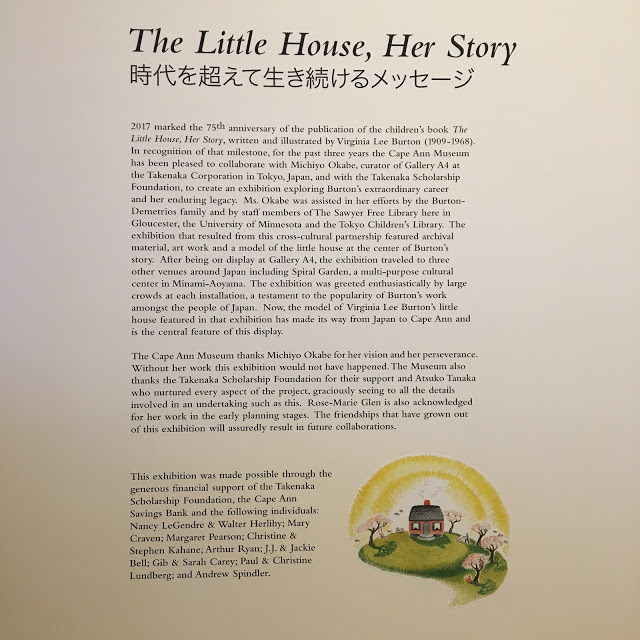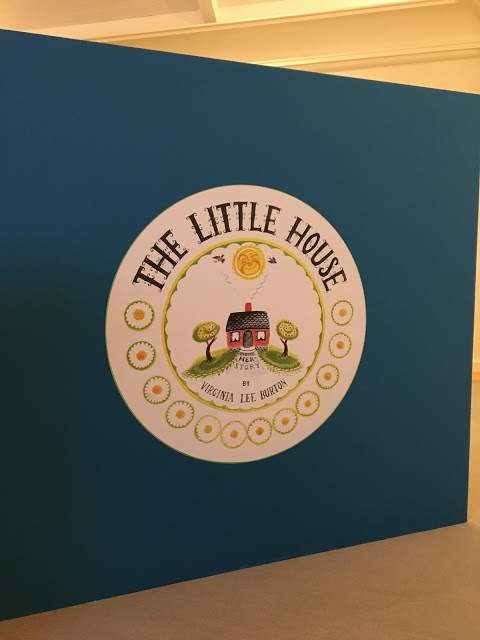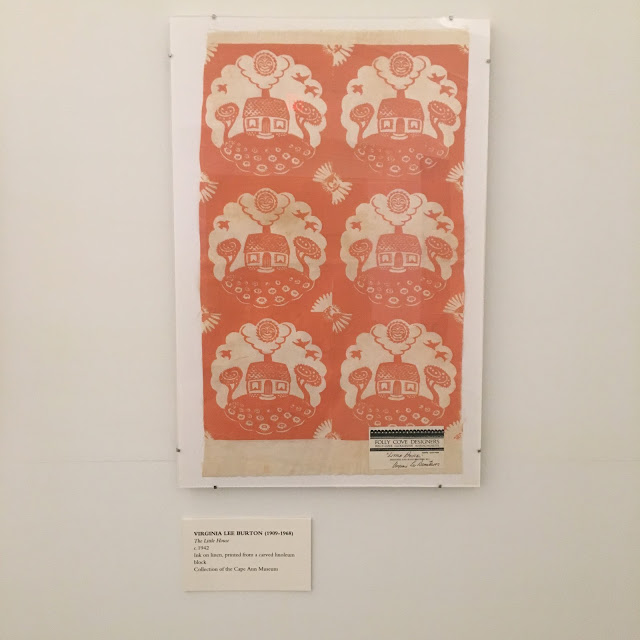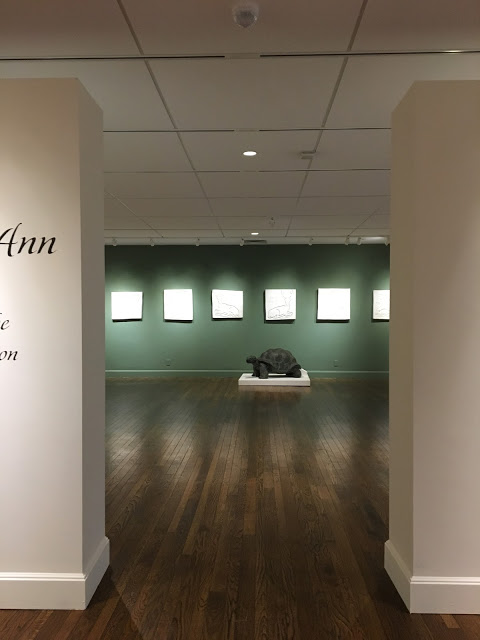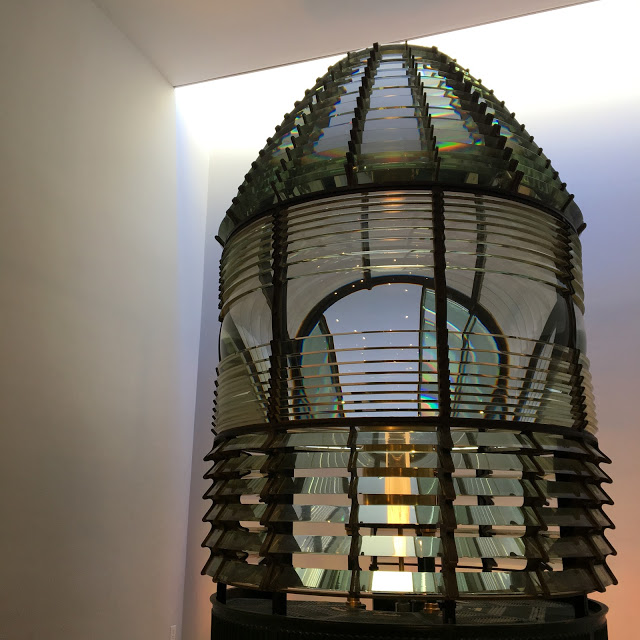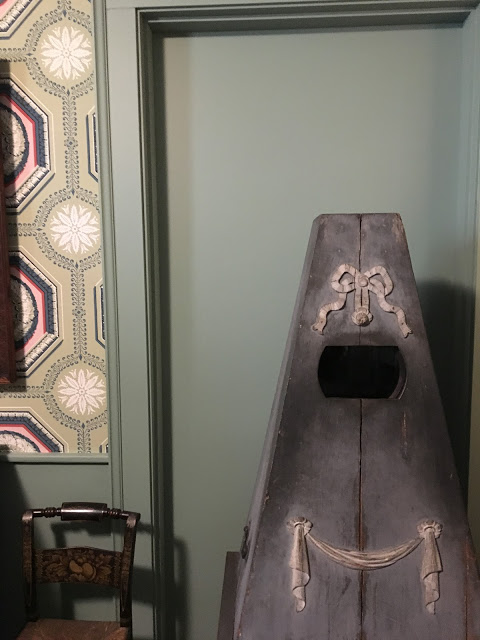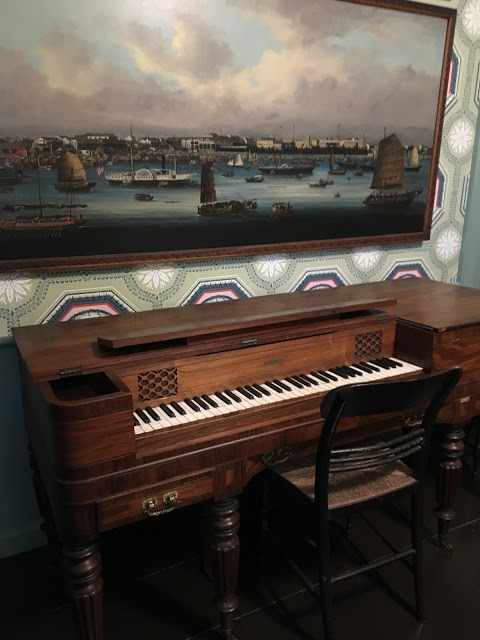This is P.S.A.: Use your public library’s museum passes. Do it!
Last Saturday, my parents and I went to the Cape Ann Museum in Gloucester, MA. Our first attempt at visiting the museum in early March was foiled by a snowstorm, but it was worth the wait! Our main pull for going was The Little House: Her Story – an exhibit dedicated to author and illustrator Virginia Lee Burton and her beloved children’s book The Little House. Through the Ipswich Public Library, I was able to book a museum pass that admitted two adults for free. Yes, free! I guess because this was such a deal, I didn’t anticipate the Cape Ann Museum being much of anything. It exceeded all my expectations though, offering three floors of art, history, fishermen, boats, lighthouse lenses, portraits, granite quarrying tools, a big tortoise sculpture, and other interestingness.
In downtown Gloucester, the sign to the museum is subtle. We hardly noticed it (thank goodness for Google Maps). But inside, the space is bright and big. We arrived just in time for an 11am docent-led tour of the museum. On the tour we were joined a large family all celebrating their mother’s/grandmother’s 80-something-th birthday. Like us, they’d come to the museum mainly for the Little House exhibit. Who knew there were so many fans of the book?
First, we toured the 1804 Captain Elias Davis House, attached to the museum near the gift shop. A preserved early 19th-century home, it’s not accessible unless you’re with a docent. There are four rooms, each with increasingly wild wallpaper as you go farther back. The wallpaper was probably my favorite part, as was this strange stereoscopic nickelodeon-esque box that was tucked in the back corner. There was no label or explanation, really. It was beside a piano with drawers that was also a mystery (dad asked the docent when it was from… no one seems to know!).
We walked through the Cape Ann Gallery featuring art and historical artifacts from the local area, and then through a room dedicated entirely to the work of painter Henry Fitz Lane, who was born in Gloucester. So many ships, sails, and rocky seas. So many.
The second floor of the Cape Ann Museum is dedicated to maritime and fishing. The highlight for me was a 13-foot-tall Fresnel lens from the top of a lighthouse. So cool to see a piece of a lighthouse up-close like that! The light from the lens could be seen 22 miles out to sea, and I believe it. The floor also included a portrait photography of local fishermen and women (fisherpeople?) and their families. I also liked the weathered statue of Our Lady of Good Voyage, who spent many years atop a Gloucester church.
The third floor was my favorite though, and not just because of the special exhibit. There’s a small room dedicated to the Folly Cove Designers, founded by Virginia Lee Burton. Heard of them? I hadn’t! They were businesswomen who designed and sold block printed decorations and fabrics in the 1940s through the 1960s. The aesthetic overall is reminiscent of the illustration style and repetition used in The Little House and Burton’s other books. It was awesome to learn about their creative and printing process, and how the whimsical designs had to be carefully carved out of linoleum.
Our tour concluded in The Little House exhibit, which was complete with a sweet, smiling diorama of the little house herself! I loved seeing Burton’s early sketches, drafts, and ideas for the book and others. I appreciate anything that demystifies the creative process and shows how much hard work goes into something so seemingly simple as a children’s book. The exhibit is on loan from Japan, and it was interesting to learn about how beloved the book is in the country, and the popularity it gained there after WWII. I typically view the book as a story about urbanization (spoiler alert: the little house falls into disrepair as a city is built up around her, until she is moved back to the country and can smile again). But I can see how it can also be interpreted as a book about post-war restoration and renewal.
The family on our tour were really into The Little House. Really. Selfie sticks with the Little House. Grown men lying on the floor just basking in all of the Little House. Yup. That all happened.
All-in-all we were at the museum for close to two hours. I’d definitely recommend the Cape Ann Museum to anyone interested in North Shore Boston history and culture. And I’d also recommend touring it with a docent, if only to see the historic house and to hear some context about some of the more interesting pieces, like the lighthouse lens. It’s a beautiful museum and I’d love to go back for a future exhibit.
P.S. I unfortunately can’t recommend any place to eat lunch in Gloucester. We tried three different restaurants downtown and all of them were packed! Everyone has spring fever, and I can’t blame them. Bring on spring!


